Spanish missions in California/Gallery: Difference between revisions
imported>Robert A. Estremo No edit summary |
imported>Robert A. Estremo No edit summary |
||
| Line 13: | Line 13: | ||
Image:Inhabitants of California.jpg|{{Inhabitants of California.jpg/credit}}<br />"Inhabitants of California" by Louis Choris. | Image:Inhabitants of California.jpg|{{Inhabitants of California.jpg/credit}}<br />"Inhabitants of California" by Louis Choris. | ||
Image:Indians Dancing.jpg|{{Indians Dancing.jpg/credit}}<br />Natives dancing at Mission Dolores, 1816. | Image:Indians Dancing.jpg|{{Indians Dancing.jpg/credit}}<br />Natives dancing at Mission Dolores, 1816. | ||
Image:Tule boat.jpg|{{Tule boat.jpg/credit}}<br />The Ohlone, Coast Miwok, and Bay Miwok all utilized utilized tule in the construction of boats for use in the San Francisco Bay estuary. Northern groups of Chumash also used tule to build reed fishing canoes.<ref>Jones and Klar, 307</ref> | |||
Image:Mission Delores 1816 Stick Game.jpg|{{Mission Delores 1816 Stick Game.jpg/credit}}<br />Indians play a stick game at Mission Dolores. | Image:Mission Delores 1816 Stick Game.jpg|{{Mission Delores 1816 Stick Game.jpg/credit}}<br />Indians play a stick game at Mission Dolores. | ||
Image:CHS-46640.jpg|{{CHS-46640.jpg/credit}}<br/>The [[San Antonio de Pala Asistencia]] (or "Pala Mission" as it is known today) ''circa'' 1900. Pala is architecturally unique among all of the Franciscan missions in that it boasts the only completely freestanding campanile, or "bell tower," in all of Alta California. It is also the only outpost that has ministered without interruption to the Mission Indians for whom it was originally built since its inception, and is the only "sub-mission" still intact.<ref name="carillo11">Carillo, p. 11</ref> | Image:CHS-46640.jpg|{{CHS-46640.jpg/credit}}<br/>The [[San Antonio de Pala Asistencia]] (or "Pala Mission" as it is known today) ''circa'' 1900. Pala is architecturally unique among all of the Franciscan missions in that it boasts the only completely freestanding campanile, or "bell tower," in all of Alta California. It is also the only outpost that has ministered without interruption to the Mission Indians for whom it was originally built since its inception, and is the only "sub-mission" still intact.<ref name="carillo11">Carillo, p. 11</ref> | ||
Revision as of 20:18, 30 October 2012
(PD) Painting: Louis Choris
The Ohlone, Coast Miwok, and Bay Miwok all utilized utilized tule in the construction of boats for use in the San Francisco Bay estuary. Northern groups of Chumash also used tule to build reed fishing canoes.[1](PD) Photo: Charles C. Pierce
The San Antonio de Pala Asistencia (or "Pala Mission" as it is known today) circa 1900. Pala is architecturally unique among all of the Franciscan missions in that it boasts the only completely freestanding campanile, or "bell tower," in all of Alta California. It is also the only outpost that has ministered without interruption to the Mission Indians for whom it was originally built since its inception, and is the only "sub-mission" still intact.[2](PD) Photo: Charles C. Pierce
Mission San Luis Rey de Francia is home to with the first Peruvian Pepper Tree (Schinus molle) planted in California in 1830, visible at right behind the arches in the above photograph (taken circa 1900).[3](PD) Photo: Joe Radigan MACM / United States Navy
Between 1944 and 1945, twenty-seven Mission Buenaventura-class fleet oilers were built (two additional vessels were converted to distilling ships after their keels had been laid).[4] Many of the ships, such as the USNS Mission Capistrano (T-AO-112) shown above, served with the United States Navy during World War II and on into the Cold War.
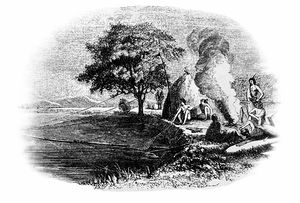
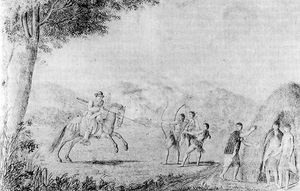
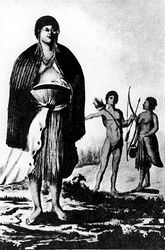
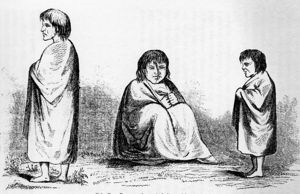
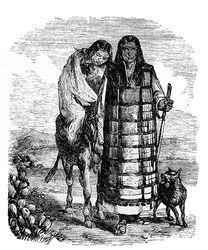
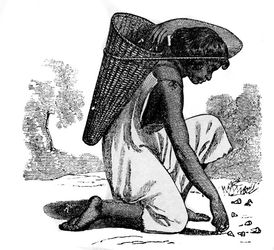
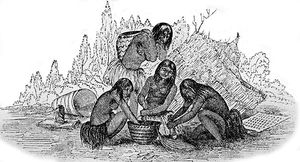
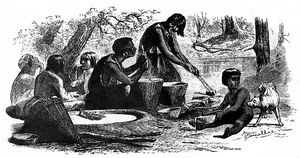
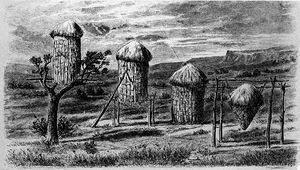

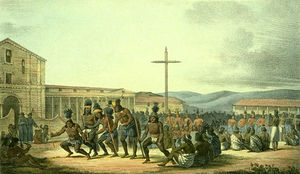
![(PD) Painting: Louis Choris The Ohlone, Coast Miwok, and Bay Miwok all utilized utilized tule in the construction of boats for use in the San Francisco Bay estuary. Northern groups of Chumash also used tule to build reed fishing canoes.[1]](/wiki/images/thumb/6/6d/Tule_boat.jpg/300px-Tule_boat.jpg)
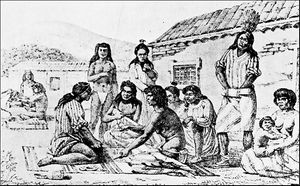
![(PD) Photo: Charles C. Pierce The San Antonio de Pala Asistencia (or "Pala Mission" as it is known today) circa 1900. Pala is architecturally unique among all of the Franciscan missions in that it boasts the only completely freestanding campanile, or "bell tower," in all of Alta California. It is also the only outpost that has ministered without interruption to the Mission Indians for whom it was originally built since its inception, and is the only "sub-mission" still intact.[2]](/wiki/images/thumb/7/7a/CHS-46640.jpg/300px-CHS-46640.jpg)
![(PD) Photo: Charles C. Pierce Mission San Luis Rey de Francia is home to with the first Peruvian Pepper Tree (Schinus molle) planted in California in 1830, visible at right behind the arches in the above photograph (taken circa 1900).[3]](/wiki/images/thumb/f/fa/CHS-2097.jpg/199px-CHS-2097.jpg)
![(PD) Photo: Joe Radigan MACM / United States Navy Between 1944 and 1945, twenty-seven Mission Buenaventura-class fleet oilers were built (two additional vessels were converted to distilling ships after their keels had been laid).[4] Many of the ships, such as the USNS Mission Capistrano (T-AO-112) shown above, served with the United States Navy during World War II and on into the Cold War.](/wiki/images/thumb/1/11/USNS_Mission_Capistrano.jpg/300px-USNS_Mission_Capistrano.jpg)